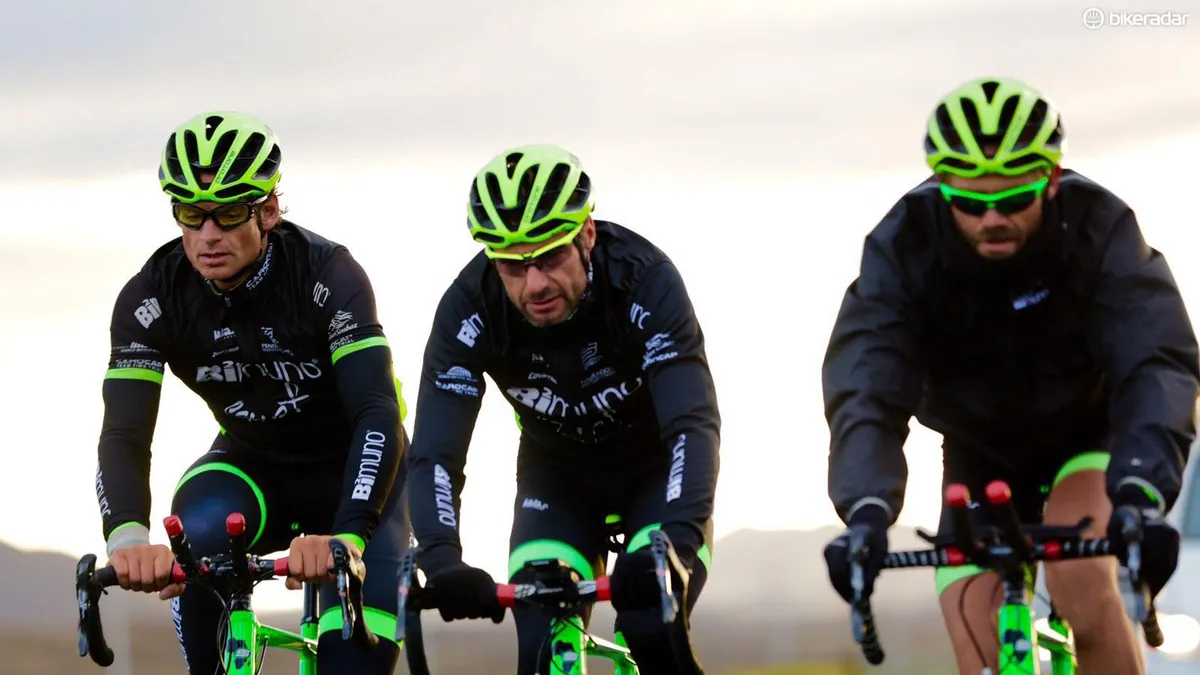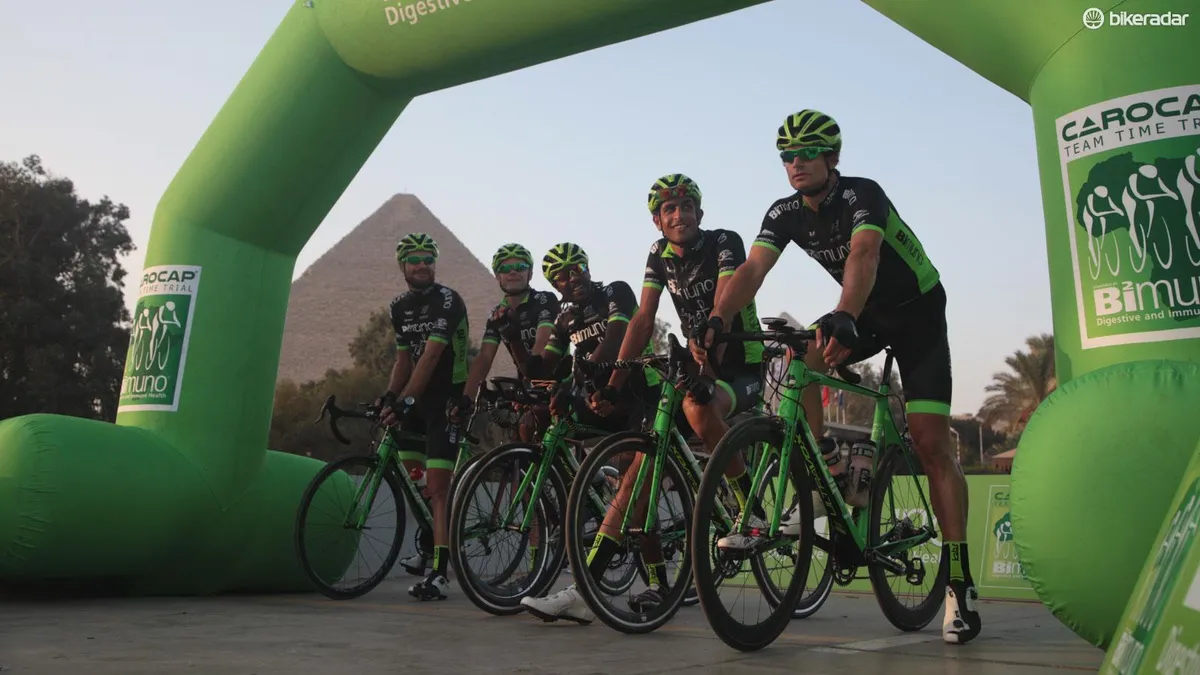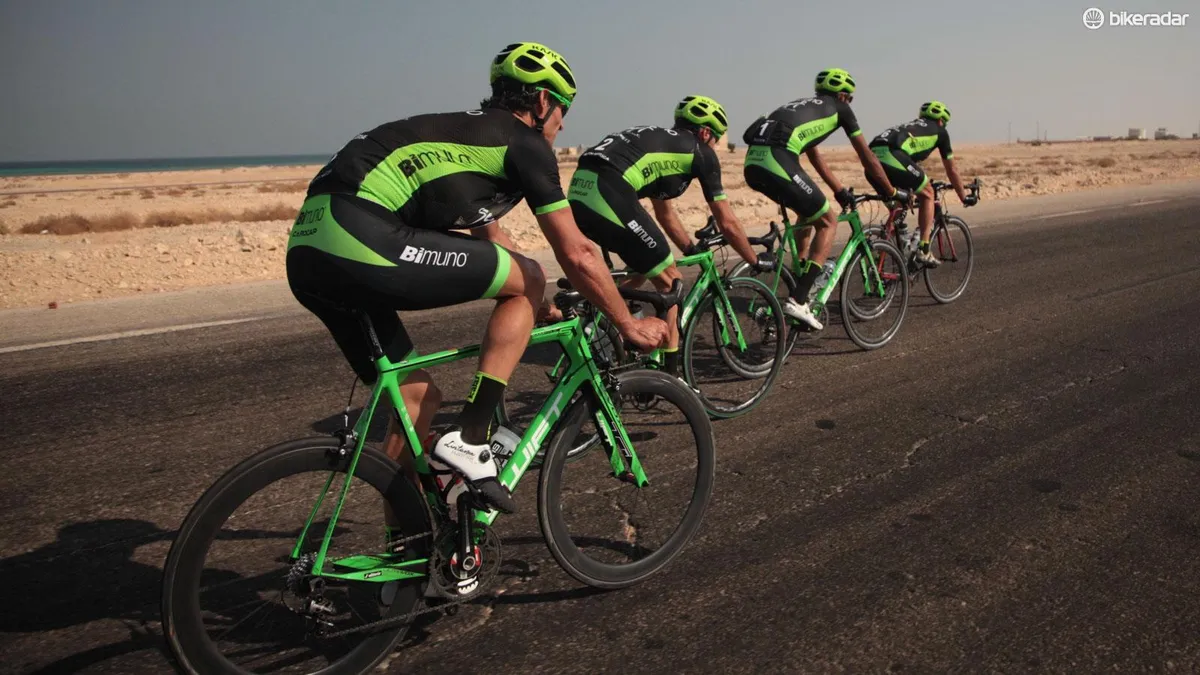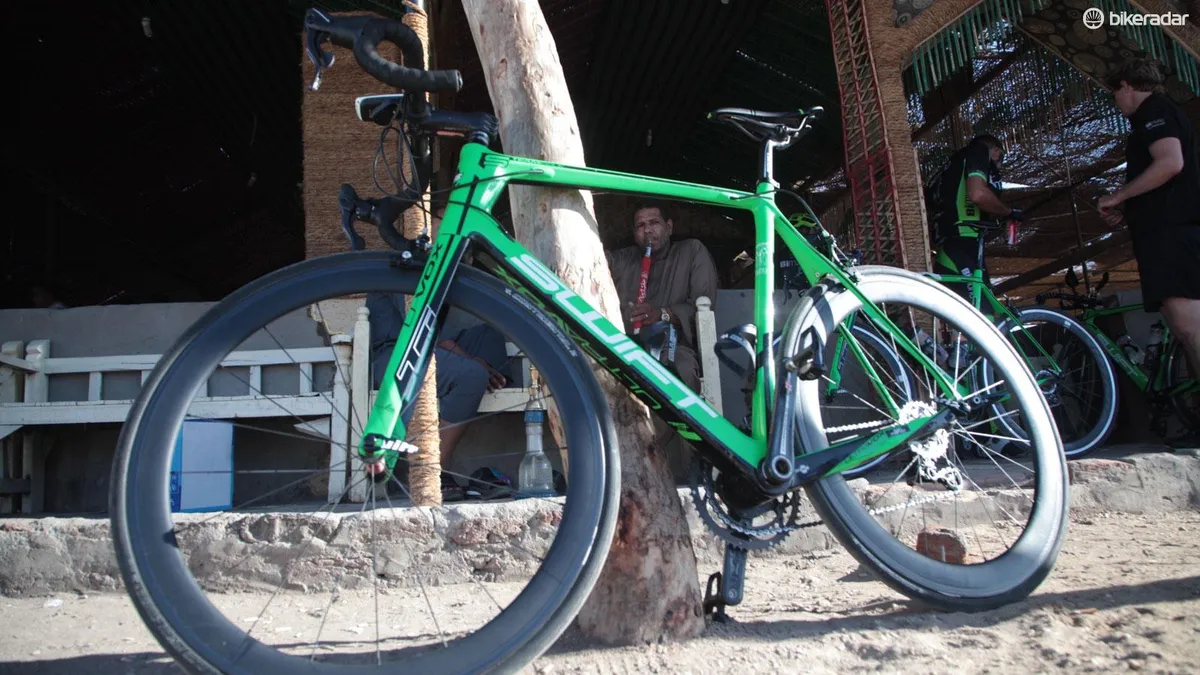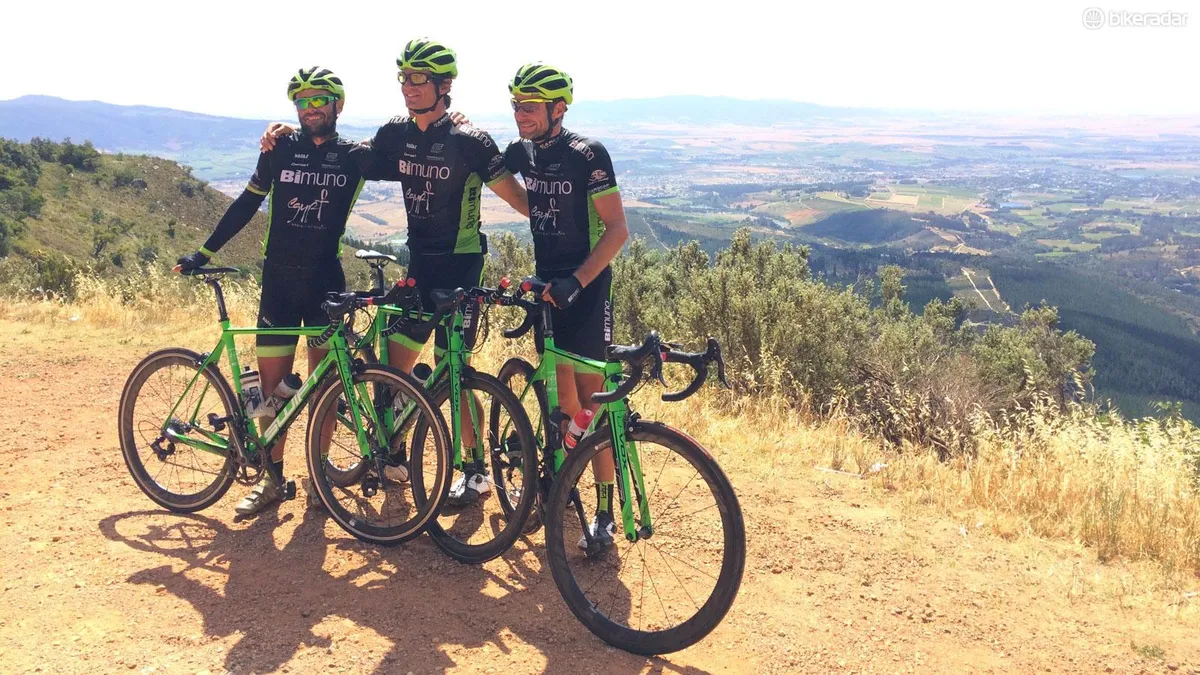Starting as a five-person team in Cairo, Eqypt, it was three riders that arrived in Cape Town, South Africa… 38 days later. The goal was to cross the length of the African continent under human power, in a world record time.
Last week, South African Mark Blewett, Englishman Nicolas Bourne and Zimbabwean David Martin finished the epic 10,600km (6,587 mile) ride, in a record 38 days, 12 hours and 16 minutes. Mark Beaumont held the previous record, at 41 days 10 hours and 22 minutes.
Of course, such a feat didn’t come easily or without drama. By the time the team had left Eqypt, they were already down one team member. The then team of four was then welcomed by the Nubian Desert, with 45+C˚ air temperatures and rough roads.
Related reading: The challenge, cause and the bike
On the sixth day, sickness struck Mark Blewett and so the team decided to take a rest day. Something the team would have to make back in following days. It was then onto Ethopia, where a drop in temperate was swapped with severe climbs.
“Today was categorically the most dangerous, hectic descent of my life. Rutted roads, trucks, kids, donkeys, heat, huge potholes. And the climb out was 19km,” said Blewett of treacherous roads in Ethopia.
At times, it’s said the task ahead seemed impossible. There were planned 350km stages cut to 285km due to surfaces that couldn’t be ridden, along with thrown stones and punches handed out to them by people on the side of the roads.
Without mentioning the finer details, the team spoke of the hostility continuing into Kenya, where an armed escort as a result of heavy bandit activity accompanied them.
Reaching Tanzania, continued torturous road conditions, scorpion-infested campsites and difficulty in finding nutritious food caused further setbacks. It’s here, that Kenyan David Kinjah retired due to injury and illness – leaving just three riders.
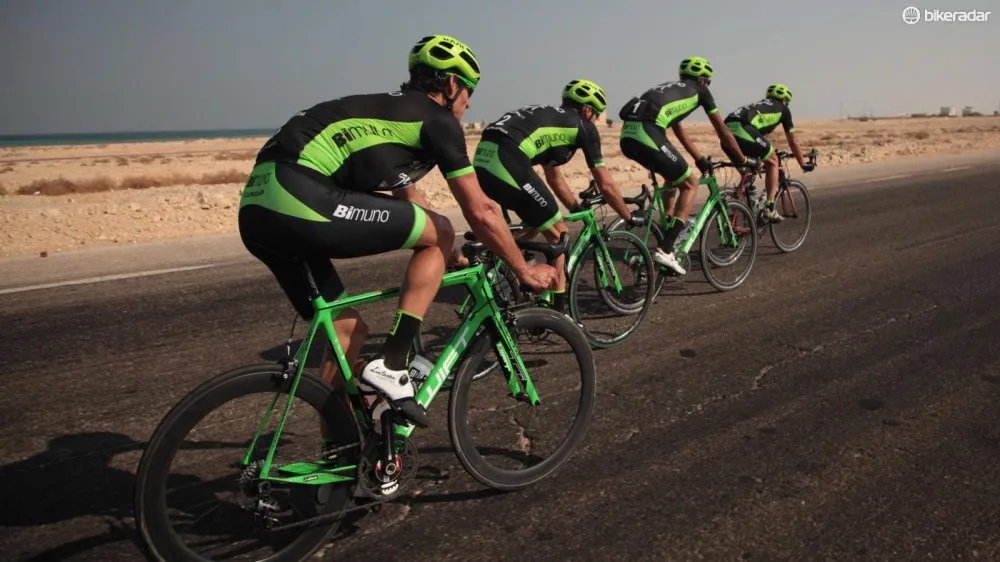
Working as a team, a loss of riders was a big hit
“This is it guys! This is the ride that actually cracked me! It’s amazing how much the human body can endure, but the sores on my bum cannot be patched with just bandages anymore. The crash in the rain on the TanZam highway left my knee and hip in too much pain… last night when arrived, I could not unclip my right foot off the pedal, so I removed my shoe instead,” said David Kinjah before leaving the group.
Continuing on, circumstances apparently experienced a welcome turnaround. Hospitality and acts of kindness from the people in Zambia are said to have kept the team motivated to reaching Zimbabwe. Once there, the smoothest roads experienced in the previous month allowed the team to ride a massive 402km in a day while crossing Victoria Falls.
With Zim crossed and the team reaching South Africa, riders were then battered by severe head winds. Suffering chronic fatigue and heat exhaustion, Bourne had a momentary lapse in concentration and crossed wheels with Blewett – but the blood shed on the roads didn’t stop them. Four days later, the shores of Cape Town arrived.
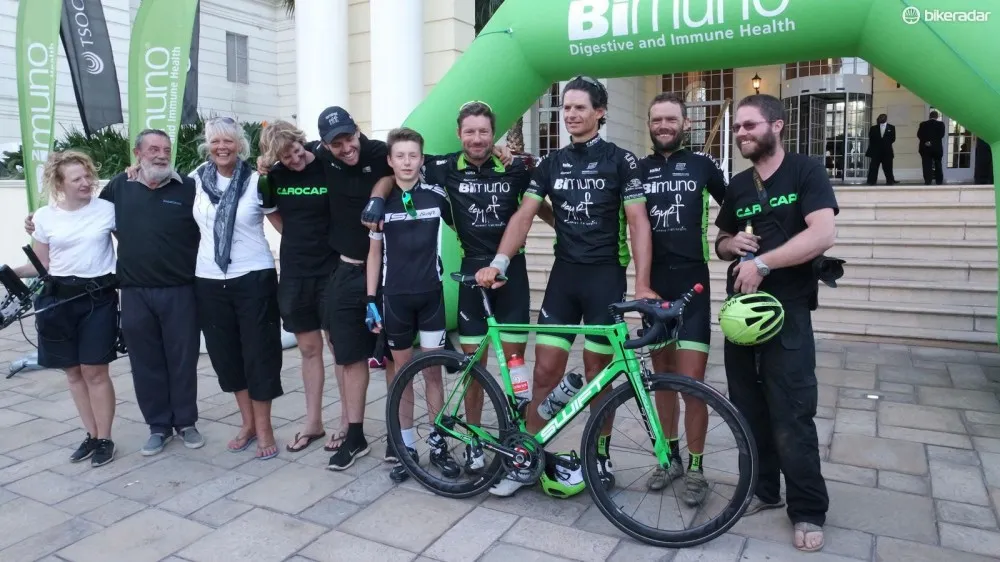
The team, having reached their destination in Cape Town
“I can’t believe it’s over – I thought I had gone to hell and this was my punishment for eternity,” said Blewett to the waiting media after climbing off his bike.
“It’s been so hard. I have cried every day in the last week and now we’re here, and I have to say a massive thank you to these guys,” said Bourne.
When the record attempt first started, we spoke with Mark Blewett about the journey ahead, and his equipment choices. As the owner of SwiftCarbon Bicycles and a former pro cyclist, Blewett is certainly knowledgeable as to his equipment choices, yet the choice of a professional-level race bike still seemed odd to us.
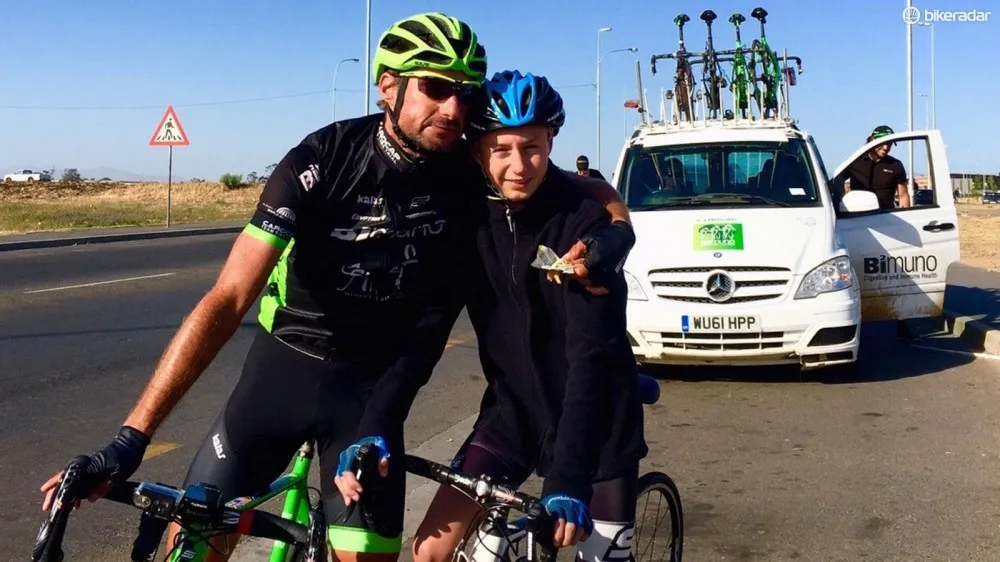
Mark Blewett was met by his son Tom to ride the final 50km together
The post-ride debrief
Having now caught up on lost sleep and severe fatigue, Blewett spoke to us about how it all worked out.
So how did the full-carbon Ultravox Ti frame hold up?
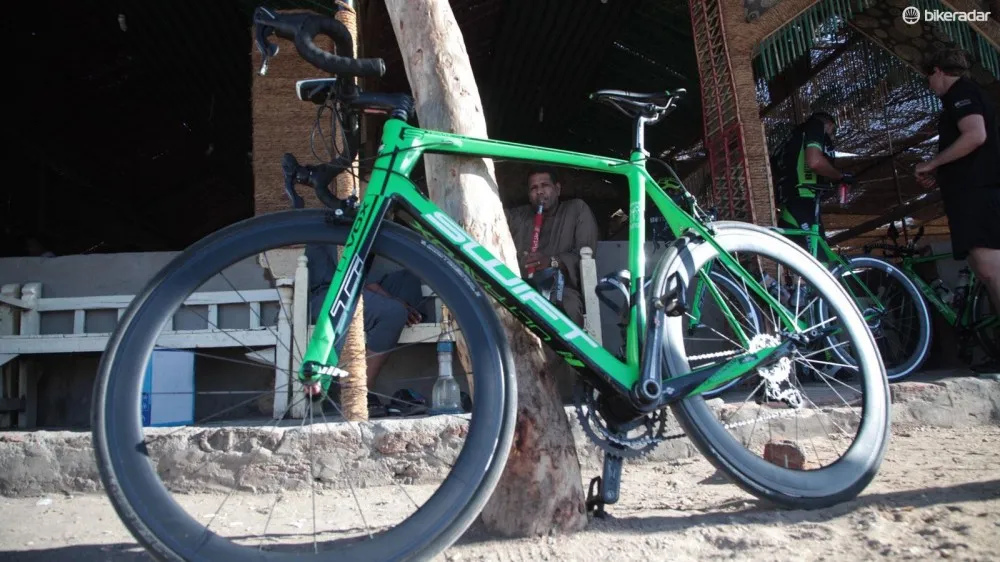
Not the expected bike for such a feat, but it survived
The equipment stood up really well. We had zero frame failures and finished in the same bikes we started on. Mine has one paint chip, that’s it. But I guess it’s only a month and a half old!
What about the carbon wheels?
The new Vittoria Qurano wheels went through hell but were amazing. We broke three rear wheels but those incidents were due to flats which resulted in rim damage from rocks – bearing in mind that this was in really severe off-road conditions where even a dual suspension bike would have struggled.
How many flat tyres?
We had quite a few flats due to the very high temperatures and tyres almost melting, plus rock strikes. Personally I only had two punctures in 10600 km and I was riding on the Vittoria Pavé 27c tyres
Those distances you did are rather massive, what would be the average intake of food/water each day?
We burned an average of 10,000 calories per day, which equates to 18 Big Mac burgers per day or 700 in total. Liquid consumption was massive, sometimes reaching 20l per rider, per day.
What was the energy product of choice?
David Martin and I used Cadence Nutrition (South African brand) – their CarboFuel, Marathon and Revive were very well balanced and did not cause any stomach issues. We had to supplement that with whatever we could get our hands on ranging from goat, beans, local breads and anything that was digestible.
Lack of variety was an issue – anything new was brilliant. Food in Sudan was seriously limited. When we spotted a roadside fruit market we jammed on brakes and gorged ourselves on oranges and mangos like seafaring explorers with scurvy. We had three large packs of biltong (cured and dried meat) brought to us in Kenya but it lasted a day.
Any equipment changes you would make to do it again (laughs)?
I will let anyone trying it learn their own lessons! Seriously though, we’d choose the same road frames, just with CX or 29er hardtails in the van for when the road runs out. We’d have saved hours – we had to walk with our bikes with the narrow tyres digging into the sand or getting trashed by the rocks.
Is there a single item that you wouldn't have finished without?
Chamois cream – I used a South African product called Ass Magic which worked really well. Sadly it became liquid in the 40 degree plus heat, so half of it ran out all over the inside of my bag. I also used ordinary Fissan Paste baby cream.
What was the strangest thing you saw in the 38 days?
It might have been a camel graveyard, literally hundreds of camel carcasses in the middle of the Nubian Desert with vultures feeding and circling above.
How long before your next ride?
My next ride is to Camps Bay beach for three double macchiatos. Although last weekend I did a 200km gran fondo event. After 180km I felt a truly deep fatigue in my muscles.
null
The CaroCap team rode in support of the World Bicycle Relief and Safari Simbaz poverty empowerment charities.
